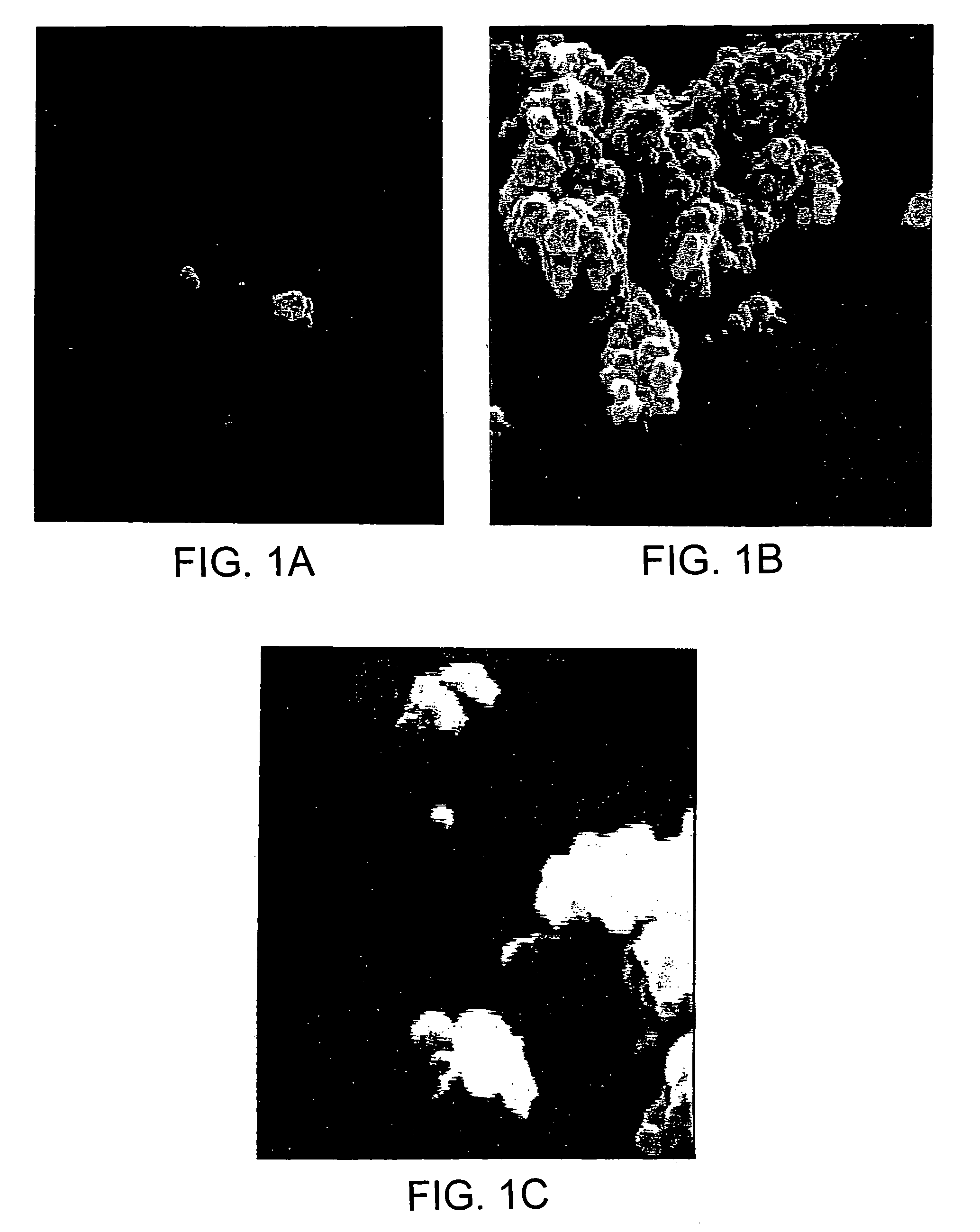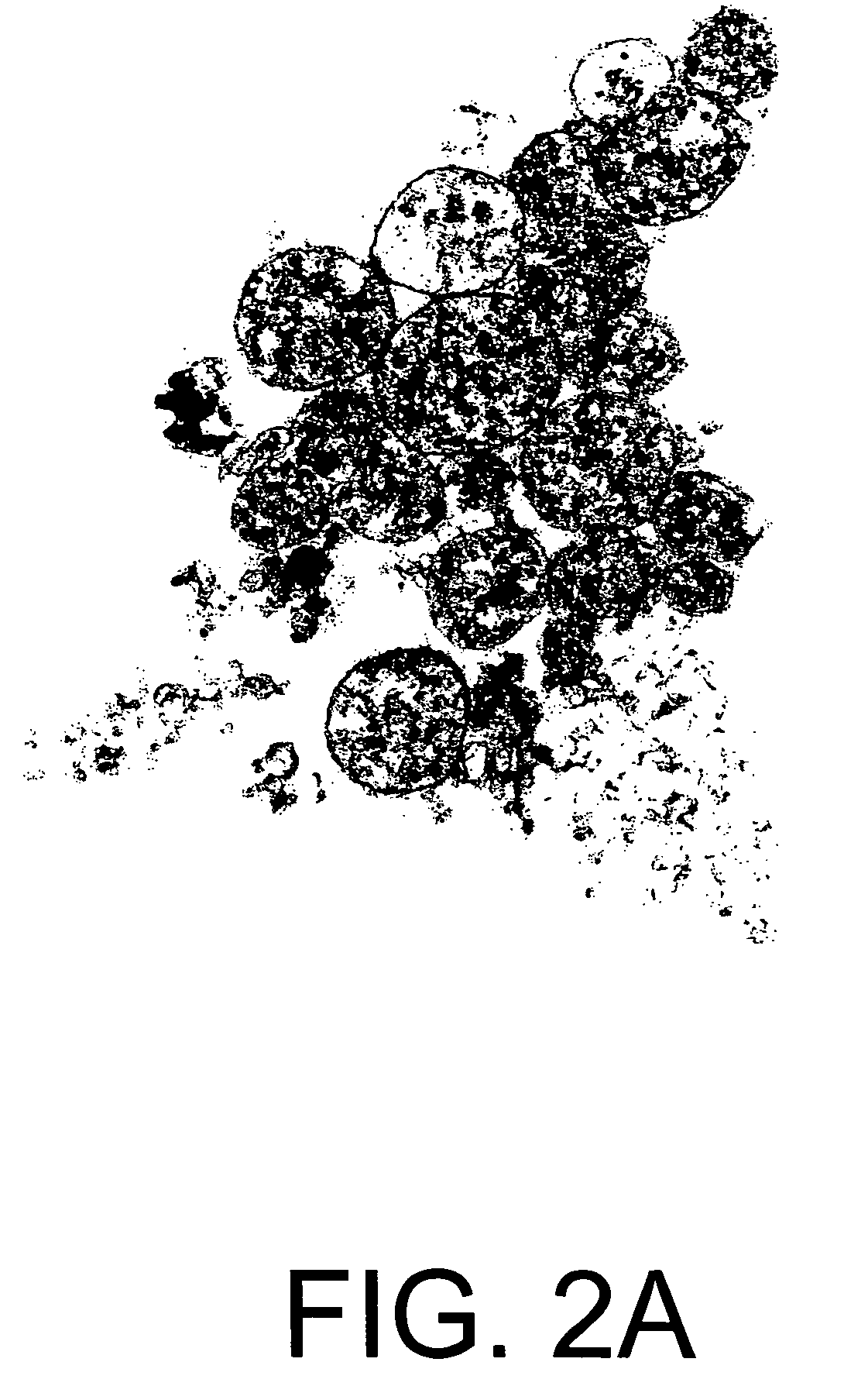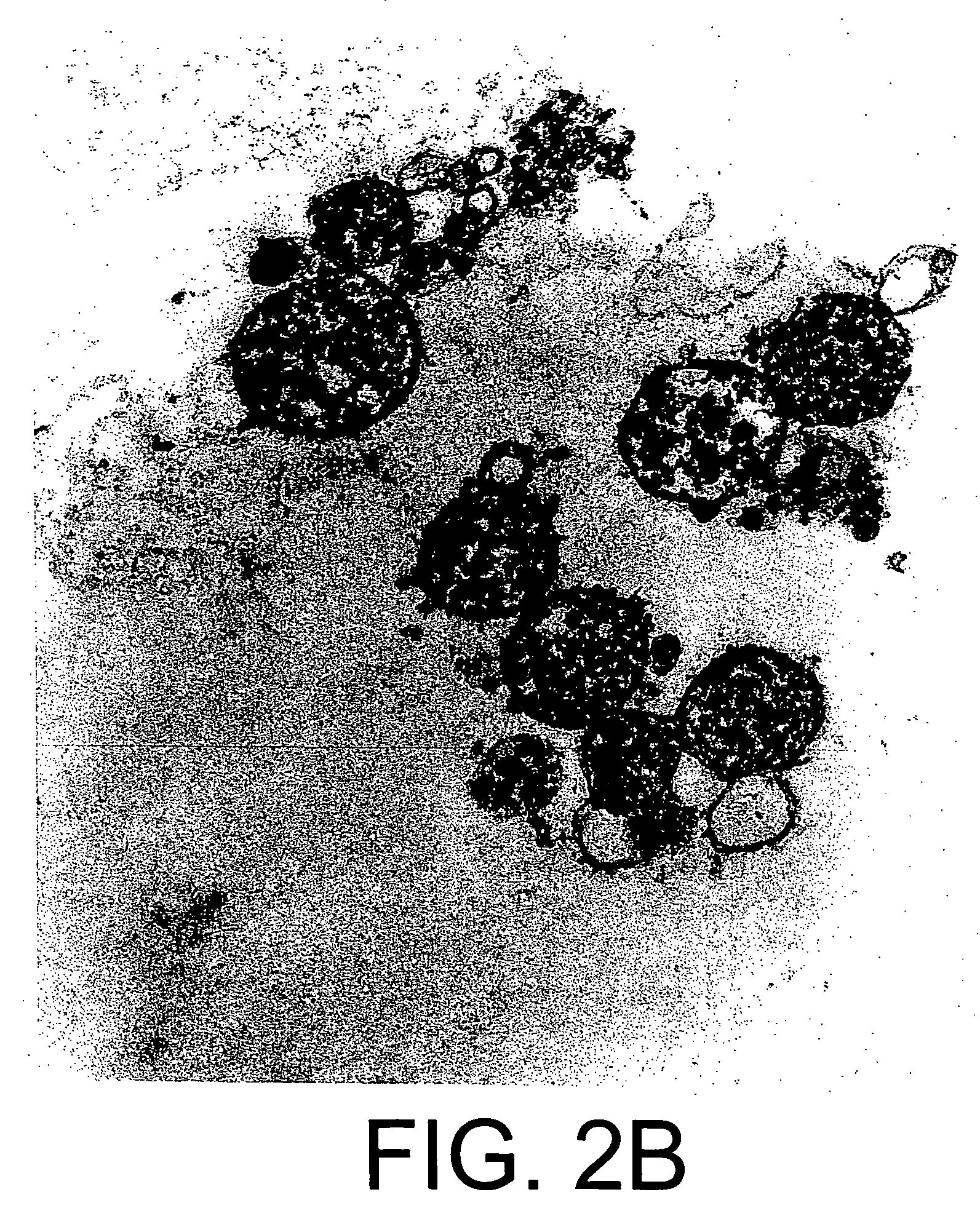Spore-like cells and uses thereof
a technology of spores and cells, applied in the field of tissue engineering and cell therapies, can solve the problems of imperfect organ function, severe limitations in transplantation, and mechanical devices that inconvenience patients, and achieve the effect of improving condition
- Summary
- Abstract
- Description
- Claims
- Application Information
AI Technical Summary
Benefits of technology
Problems solved by technology
Method used
Image
Examples
example 1
[0114]Spore-like cells were isolated from human blood as follows. Five cc's of whole blood were acquired from an adult human and placed in a tube containing an anti-coagulant. The blood sample was then centrifuged at 1200 rpm for approximately five minutes. The supernatant was removed and the resulting pellet was resuspended in 15 cc's of DMEM / F-12 medium supplemented with a combination of the following hormones and nutrients: glucose (23 mM), transferrin (10 mg / ml), insulin (20 mg / ml), putricine (10 mM), selenium (100 nM), progesterone (10 nM) (Life Technologies, Baltimore, Md.), EGF (20 ng / ml), and bFGF (20 ng / ml) (Collaborative Biomedical Products, Chicago, Ill.). The resulting suspension was transferred to 75 cm2 tissue culture flasks and incubated in 5% CO2 at 37° C. The media were changed every 3-4 days. Cells were passaged every 7-9 days. Initially, these culture flasks appeared to contain many hematopoeitic cells (e.g., red blood cells), but over time (usually, a matter of s...
example 2
[0116]Spore-like cells were isolated from the skin of an adult rodent as follows. Excisional biopsies of the skin of adult Fisher rats were made under sterile conditions. The biopsied tissue, which included the dermis and epidermis, was placed in a petri dish containing cold (50° C.) phosphate buffered saline (PBS) and antibiotics (penicillin (50 mU / ml) and streptomycin (90 mg / ml)). The epidermis was scraped with a #11 scalpel to disassociate epidermal cells, and the tissue was then transferred to a second petri dish (also containing cold PBS and antibiotics) where the dermis was scraped with a #11 scalpel. The cells that were dissociated were then centrifuged at 1200 rpm (GLC-2B, Sorvall, Wilmington, Del.) for five minutes and resuspended in 10 ml of 0.05% trypsin (Life Technologies, Baltimore, Md.). Following resuspension in trypsin, the tissue was incubated at 37° C. for five minutes. Ten ml of Dulbecco's Modified Eagle Medium (DMEM) / F-12 containing 10% heat inactivated fetal bov...
example 3
[0120]Spore-like cells were isolated from adult rat heart according to the protocol described in Example 2. The newly isolated cells, which are shown in FIG. 3A, include undifferentiated spore-like cells. After three days in culture, early myocardial cells can be seen (FIG. 3B), and after two weeks in culture, Purkinje-like structures can be seen (FIG. 3C).
PUM
| Property | Measurement | Unit |
|---|---|---|
| diameter | aaaaa | aaaaa |
| diameter | aaaaa | aaaaa |
| diameter | aaaaa | aaaaa |
Abstract
Description
Claims
Application Information
 Login to View More
Login to View More - R&D
- Intellectual Property
- Life Sciences
- Materials
- Tech Scout
- Unparalleled Data Quality
- Higher Quality Content
- 60% Fewer Hallucinations
Browse by: Latest US Patents, China's latest patents, Technical Efficacy Thesaurus, Application Domain, Technology Topic, Popular Technical Reports.
© 2025 PatSnap. All rights reserved.Legal|Privacy policy|Modern Slavery Act Transparency Statement|Sitemap|About US| Contact US: help@patsnap.com



